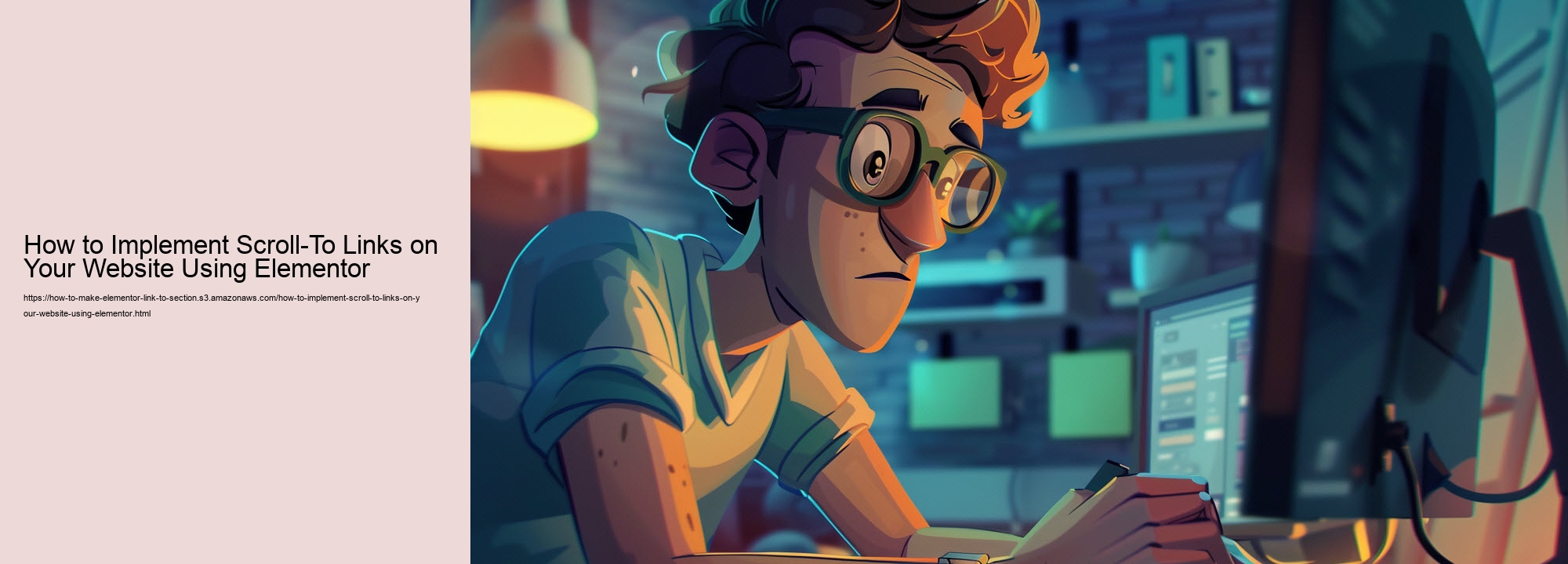Setting up the anchor points on your website
Setting up the anchor points on your website is a crucial step in creating a seamless user experience. How to Implement Scroll-To Links on Your Website Using Elementor . By implementing scroll-to links using Elementor, you can easily navigate users to specific sections of your webpage with just a click.
To begin, you'll need to identify the sections of your website that you want to link to. This could be anything from a product description to a contact form. Once you have determined these anchor points, you can start setting them up within Elementor.
Elementor provides an easy-to-use interface for adding anchor links to your website. Simply select the section you want to link to and assign it an anchor ID. Then, create a hyperlink elsewhere on your page and use the "#" symbol followed by the anchor ID as the URL.
When users click on this link, they will be smoothly scrolled down to the designated section of your page. This not only enhances user experience but also makes it easier for visitors to find relevant information quickly.
By taking the time to set up anchor points using Elementor, you are ensuring that your website is optimized for easy navigation and improved usability. So go ahead and give it a try – your users will thank you for it!
Creating the navigation menu with scroll-to links
Creating a navigation menu with scroll-to links is a great way to enhance the user experience on your website. By implementing this feature, you can make it easier for visitors to navigate through different sections of your site quickly and efficiently.
To do this using Elementor, you will first need to create the various sections or elements that you want to link to. This could include different pages, blog posts, or specific content within a page. Once you have these elements in place, you can then create a custom navigation menu using Elementor's built-in tools.
One of the key benefits of using scroll-to links is that it allows users to jump directly to the desired section of a page without having to manually scroll through lengthy content. This can help improve the overall usability of your site and keep visitors engaged for longer periods.
In addition, implementing scroll-to links can also have SEO benefits by making it easier for search engines to crawl and index your content. By providing clear and organized navigation, you can help improve the visibility of your site in search engine results.
Overall, creating a navigation menu with scroll-to links is a simple yet effective way to improve the user experience on your website. With Elementor's intuitive interface and powerful features, you can easily implement this feature and enhance the functionality of your site for both visitors and search engines alike.
Customizing the scroll behavior with Elementor
Customizing the scroll behavior with Elementor allows you to create a seamless and engaging user experience on your website. By implementing scroll-to links, you can guide your visitors through different sections of your site with ease.
With Elementor's intuitive drag-and-drop interface, you can easily add anchor links to specific sections of your page. This means that when a visitor clicks on a link, they will be smoothly scrolled down to the corresponding section, creating a more interactive browsing experience.
By customizing the scroll behavior, you can control how fast or slow the scrolling animation is, as well as add smooth transitions for a polished look. You can also customize the offset of the scroll, ensuring that the linked section is perfectly aligned with the top of the page.
Overall, customizing the scroll behavior with Elementor allows you to enhance navigation on your website and keep visitors engaged with your content. So why not give it a try and see how it can elevate the user experience on your site?
Testing and troubleshooting the scroll-to links functionality
Testing and troubleshooting the scroll-to links functionality is an essential step in ensuring a seamless user experience on your website. When implementing scroll-to links using Elementor, it is important to thoroughly test each link to confirm that they are working correctly and navigating users to the intended sections of the page.
One common issue that may arise during testing is broken or malfunctioning links. This can be caused by incorrect anchor tags, missing target elements, or conflicting scripts on the page. By carefully inspecting each link and its corresponding anchor point, you can identify and troubleshoot any issues that may be preventing smooth scrolling.
Additionally, testing the responsiveness of scroll-to links across different devices and screen sizes is crucial for ensuring a consistent user experience. By simulating various viewport sizes and interacting with the links on different devices, you can detect any layout or alignment issues that need to be addressed.
In conclusion, testing and troubleshooting the scroll-to links functionality for your website is key to providing a user-friendly browsing experience. By paying attention to detail and thoroughly checking each link, you can ensure that visitors can easily navigate through your content with just a simple click.
